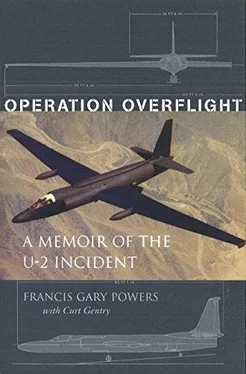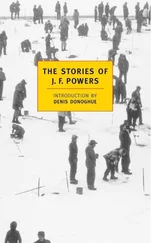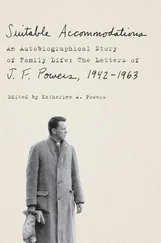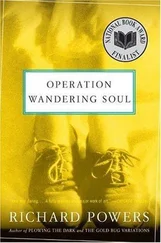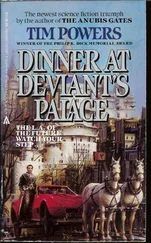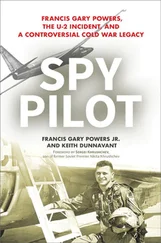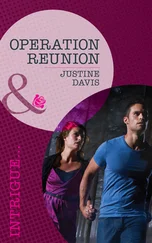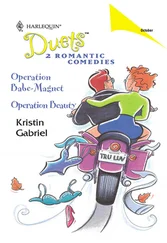As previously mentioned, the rocket-launching site, Tyuratam Cosmodrome, was not a primary target on this particular overflight but had been thrown in since I would be in the vicinity. I had emphasized it in the interrogations in the hope, successful I felt, that the Russians would focus on this rather than our major objectives.
Q. Defendant, did you realize that by intruding into the airspace of the Soviet Union you were violating the sovereignty of the USSR?
A. Yes, I did.
Q. Why did you agree?
A. I was ordered to do so.
Q. Do you think now you did your country a good or an ill service?
A. I would say a very ill service.
Q. Did it not occur to you that by violating the Soviet frontiers you might torpedo the Summit Conference?
A. When I got my instructions, the Summit was farthest from my mind. I did not think of it.
Q. Did it occur to you that a flight might provoke military conflict?
A. The people who sent me should have thought of these things. My job was to carry out orders. I do not think it was my responsibility to make such decisions.
Q. Do you regret making this flight?
Grinev had warned me the question was coming. I had expected it from him or Rudenko, not the presiding judge. If I had entertained any doubts that they were working as a team, this settled them.
A. Yes, very much.
I didn’t add that I regretted it only because it was unsuccessful.
Another of the judges, Major General Alexander I. Zakharov of the Air Force, now had his inning. As might be anticipated, his questions dealt with my flight training, details of the May 1 mission, instrumentation, and so forth. Except for a query about the granger, in which I managed to make clear it was designed for air-to-air rockets, none were loaded questions. Most of those which followed, from Major General Dmitry Z. Vorobyev of the Artillery, were. Vorobyev tried to trap me into saying I was familiar with the special equipment, but failed.
It was interesting how the questions dovetailed. What Rudenko left out, Grinev or one of the judges put in.
Finally I was allowed to sit down. Counting the previous day, I’d been on the stand nearly six hours.
Looking exceedingly uncomfortable in suits and ties, and obviously nervous about appearing before such a large audience, the four men from the state farm (who were later decorated by the USSR for heroism) related the details of my “capture.”
Something was missing from their testimony, but not until the last one had finished did I realize what it was. None of the four had mentioned the second parachute we had seen.
Why?
At the time, I had assumed the parachute was in some way connected with the rocket. Now I began to wonder if, in addition to the U-2, the Soviets had also shot down one of their own planes.
With that same “first shot.”
Asked if I had any questions for them, I said, “I want to express my thanks for the help that was shown to me by all these people on that day. This is the first opportunity I have had to thank them. I am happy to thank them.”
Since “voluntary surrender” was one of the mitigating circumstances, I wanted it clearly established that I had not resisted capture and felt no antagonism toward them.
It was now the turn of the “expert witnesses.” Functioning as a committee, each group had been assigned for study a certain portion of the evidence.
The first group, after examining the various documents found on me or on the plane, concluded that “the pilot Francis Powers belongs to the Air Force of the United States of America.”
Grinev didn’t object. But by now I had given up expecting him to. The court seemed to accept their finding as fact.
The next group had been given the task of examining the wreckage and determining whether there were identification marks on the aircraft. They concluded that there were not and had never been.
I knew better. Given a chance to question their spokesman, I asked whether the identification marks could have been placed on top of the paint and then removed. Though he conceded the possibility, the presiding judge made clear that he accepted the original testimony. I realized it was useless to persist.
Other witnesses, after lengthy examination of the special equipment—cameras, exposed film, radio receiving instruments, magnetic recorders, etc.—concluded that they had been used for reconnaissance and that the purpose of the flight was espionage.
After this, there was a break for lunch. This time the guards kept me surrounded. Apparently they had sensed that I was ready to bolt and were determined to give me no second chance.
With the start of the second session at 4:30 P.M. there was no longer any doubt as to why Rudenko had earlier emphasized the pistol.
The expert witness, a lieutenant colonel in the Engineers, stated:
“The pistol is designed for noiseless firing at people in attack and defense.”
I was now to be made a potential assassin, even though my weapon was only a .22.
But he didn’t stop at that. Examining other portions of my survival equipment, he observed: “The above-mentioned vials represent an incendiary means consisting of a packing, combustible substance and a friction-type ignition device. On the exterior surface of the packing there is a brief instruction for use of the vials written in English. Such vials are manufactured for special use when it is necessary for flame to act for a comparatively long time on the object to be set on fire.”
The implication was obvious. If I was shot down and succeeded in escaping, I was to act as an agent, either assassinating people or engaging in sabotage, using these “incendiary vials” to burn down important buildings, and similar acts.
I couldn’t let this pass.
DEFENDANT POWERS: Would it be possible for me to see one of those things referred to as a vial?
After being handed one, I asked if the interpreter could read aloud the instructions on the cover.
INTERPRETER: “Ignition vial M-2, combustible. To ignite, break open red lid with pin, pull wire from inside. Do not handle red section. Use thin piece of dry wood as shown in drawing.” And there is the illustration of a campfire. Defendant Powers claims that this substance is used to light campfires, and in particular, with damp wood.
DEFENDANT POWERS: AS regards the pistol, it was given only for hunting, and I took it for this purpose. Unfortunately, nobody but myself knows that I cannot kill a person even to save my own life.
PRESIDING JUDGE: Defendant Powers, you are aware that at an altitude of sixty-eight thousand feet it is difficult to hunt game.
DEFENDANT POWERS: Yes, I know. This was to be used only in case I had a forced landing.
Other experts had examined the destruct mechanism. Again there were implications. “The elements of the remote-control circuit were not found…. The safety catch may be connected mechanically with any part of the aircraft that separates when the plane is abandoned by the pilot, for example with the cockpit ejector system.”
In short, they were implying that had I tried to use the ejection seat, I would have been destroyed with the plane.
Since the elements of the remote-control circuit were missing (or rather, I suspected, simply hadn’t been introduced into evidence), there was no way for me to prove otherwise.
On coming to the poison pin, they stated that it had been “found at the place where the plane, piloted by Powers, fell.” Obviously they didn’t want to admit the truth: that it had been missed in three separate searches, being discovered only after I had been taken to Sverdlovsk.
Well aware of its effect on the audience, they got maximum propaganda value out of the pin. An expert testified: “An experimental dog was given a hypodermic prick with the needle extracted from the pin, in the upper third part of the left hind leg. Within one minute after the prick the dog fell on his side, and a sharp slackening of the respiratory movements of the chest was observed, a cyanosis of the tongue and visible mucous membranes was noted. Within ninety seconds after the prick, breathing ceased entirely. Three minutes after the prick, the heart stopped functioning and death set in.”
Читать дальше
